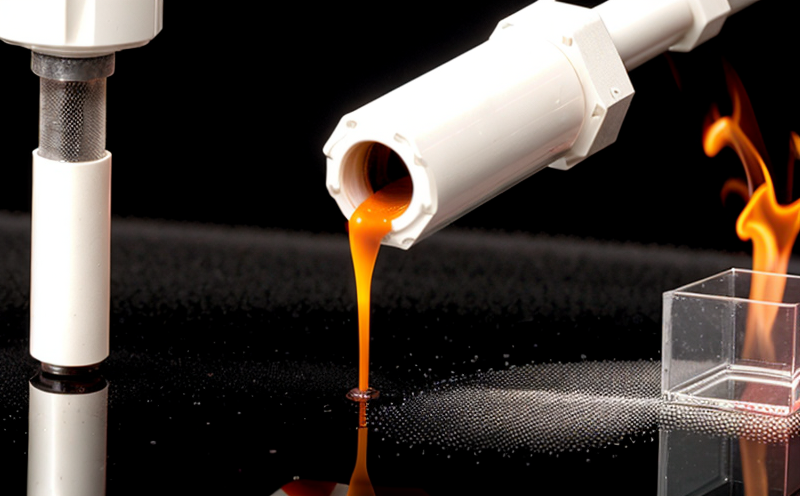DIN EN 15051 Dustiness and Stability of Nanomaterials during Handling
The DIN EN 15051 standard is designed to ensure that nanomaterials remain stable and do not become airborne during handling, processing, and storage. This stability is crucial for both the safety of personnel involved in these processes and environmental protection.
Handling nanomaterials requires a deep understanding of their unique properties due to their size and shape. The standard addresses the dustiness aspect by specifying methods that determine how easily particles can become airborne under controlled conditions. This ensures that workers are not exposed to potentially harmful particulates, which could lead to respiratory issues or other health concerns.
Stability testing is essential for understanding the long-term behavior of nanomaterials in various environments and during different handling procedures. By conducting these tests according to DIN EN 15051, manufacturers can ensure their products meet safety standards and comply with regulatory requirements. This also helps in optimizing production processes by identifying potential risks early on.
The standard outlines precise protocols for sampling and analyzing nanomaterials under different conditions such as temperature, humidity, vibration, and exposure to light. These tests provide valuable insights into how nanomaterials behave when subjected to real-world scenarios, allowing researchers and manufacturers to make informed decisions about product design and safety measures.
Compliance with DIN EN 15051 is not just a requirement; it's an investment in the future of nanotechnology. By adhering to this standard, companies demonstrate their commitment to worker health and safety while also contributing positively to environmental sustainability efforts. The results from these tests can be used to develop safer products, enhance workplace practices, and contribute towards reducing the overall risk associated with handling nanomaterials.
Understanding the importance of stability during handling also extends beyond just meeting regulatory requirements—it plays a key role in ensuring product quality and reliability. When nanomaterials remain stable throughout their lifecycle—from production to disposal—they perform consistently across all stages, leading to better outcomes for end-users.
In summary, DIN EN 15051 provides the framework necessary for testing nanomaterials' dustiness and stability during handling. Through rigorous evaluation methods, this standard ensures that nanotechnology remains safe and effective for everyone involved in its development and use.
Scope and Methodology
DIN EN 15051 applies to the determination of the dustiness and stability of nanomaterials during handling. The scope encompasses various types of nanoparticles, including but not limited to metal oxides, carbon-based materials, and other engineered nanomaterials.
- Sampling: Samples are taken from bulk materials or processed products following specified procedures.
- Suspension Preparation: Nanoparticles are suspended in appropriate solvents according to defined protocols.
- Air Sampling: Airborne particles are collected using standardized sampling techniques.
- Analytical Methods: Various analytical methods such as scanning electron microscopy (SEM), transmission electron microscopy (TEM), and gravimetric analysis are used for quantification.
The methodology aims to minimize the risk of nanoparticle release into the air by evaluating factors like particle size distribution, agglomeration tendency, and dispersion behavior. The testing process ensures that any potential hazards associated with airborne nanomaterials are identified early in the product lifecycle, allowing for necessary adjustments to be made.
By following DIN EN 15051, organizations can demonstrate their commitment to occupational health and safety as well as environmental protection standards. This approach not only helps protect workers but also contributes significantly towards sustainable development goals by reducing adverse impacts on human health and the environment.
Competitive Advantage and Market Impact
Adhering to DIN EN 15051 gives organizations a significant competitive advantage by ensuring they meet or exceed the highest industry safety standards. In today's highly regulated environment, compliance with international standards is crucial for gaining trust from customers, investors, and stakeholders.
- Innovation Leadership: By staying ahead of regulatory requirements, companies can continue to innovate without compromising on quality or safety.
- Better Product Quality: Testing according to this standard helps identify potential issues early in the product lifecycle, leading to higher-quality end products.
- Risk Management: The ability to predict and mitigate risks associated with nanoparticle handling provides peace of mind for both employees and customers.
In terms of market impact, compliance with DIN EN 15051 can open doors to new markets where stringent safety regulations are in place. It also enhances brand reputation, making it easier to attract top talent and secure long-term contracts.
For quality managers, compliance officers, R&D engineers, and procurement teams involved in nanotechnology projects, this standard offers a clear roadmap for ensuring safety without sacrificing productivity or innovation potential. By integrating DIN EN 15051 into their workflows, these professionals can ensure they are at the forefront of best practices.
Use Cases and Application Examples
DIN EN 15051 finds application in numerous sectors where nanomaterials are used. One key area is electronics manufacturing, where advanced materials like graphene and quantum dots are increasingly employed to improve performance and efficiency.
- Electronics Manufacturing: Testing dustiness and stability ensures that nanomaterials remain intact during assembly processes, preventing contamination and ensuring product reliability.
- Pharmaceuticals: Nanoparticles used in drug delivery systems need to be stable during transportation and storage. DIN EN 15051 helps ensure these materials do not degrade prematurely or become airborne.
- Mining and Metallurgy: Handling metal oxides like titanium dioxide (TiO₂) requires careful consideration of dustiness levels to prevent worker exposure.
In addition to these sectors, DIN EN 15051 is also applicable in fields such as environmental remediation, where engineered nanoparticles are used to clean contaminated sites. Testing according to this standard ensures that these materials do not pose a risk during deployment or cleanup operations.
For R&D engineers working on cutting-edge nanotechnologies, compliance with DIN EN 15051 is essential for ensuring their innovations meet all necessary safety criteria before being introduced to the market. This helps protect both researchers and end-users while fostering trust in the technology.





